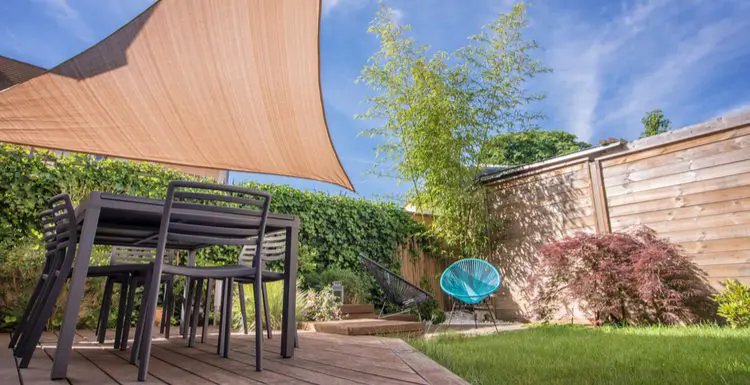What are the best shrubs for shade? And where is the best place for them? You’re in the right place.
Read on to learn all you need to know about our 10 favorites, including where they grow and why they’re great for shade.
Which Shrubs Are Best for Shade?
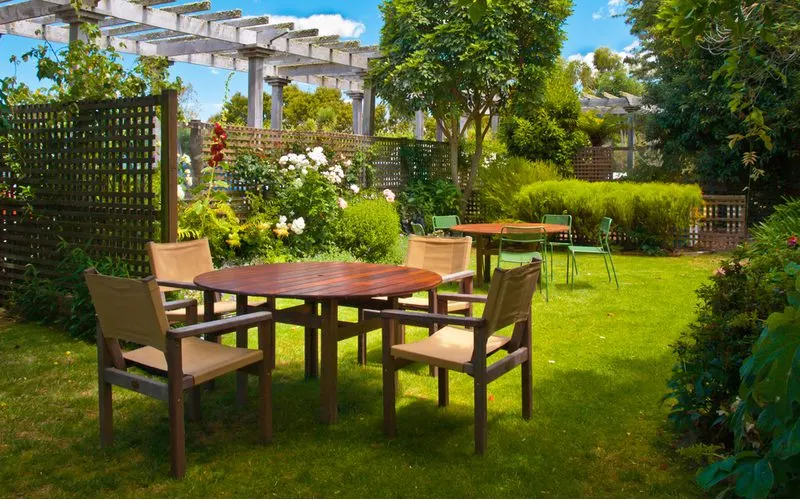
Rudmer Zwerver/Shutterstock
Did you know that there are more than 30 different shrubs you can use for shade? It’s true! And all of them are available in the US.
When selecting shrubs for shade, you want to remember a few things.
- The larger the shrub, the more shade it creates
- Use evergreen plants if you live in a warmer climate
- Likewise, use seasonal plants if you live in a temperate region
- Plants native to your area will thrive better than exotic plants
Many shrubs are hardy and can survive in different weather conditions, but it’s essential to know which ones.
10 Best Shrubs for Shade
Every garden or lawn needs shade. The shade allows plants some respite from the burning rays of the sun and brings helpful insects to your garden that will keep your plants thriving.
Also, shrubs, which produce flowers and fruits, are great for attracting birds and butterflies.
Again, these animals will help your yard grow. So which shrubs for shade are best for you? A lot depends on where you live.
With so many shrubs to choose from, your best bet is to choose based on their native homes, their flowers or fruits, and their size.
Take a look at some of the most popular shrubs for shade, in no particular order.
1. Tree Peony
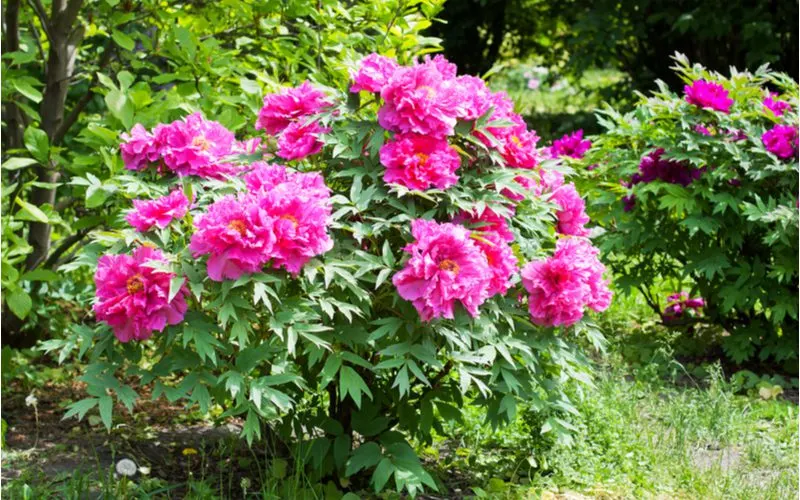
Hanna Pylypenko/Shutterstock
- Type: Seasonal
- Native area: North-east US and eastern Canada, from Montana to Nova Scotia
Tree peonies are bushy shrubs that produce gorgeous flowers in the late spring. Depending on the type of flower, which can be white, yellow, or purple, peonies bring elegance to a garden. These shrubs are not large.
Tree peonies grow between three and seven feet tall, so they’re best if you need limited shade for a garden.
The great thing about these shrubs is that they don’t require much water. Overwatering can kill them. They’re a plant-and-forget kind of shrub. The best time to plant peonies is in the fall.
2. Andromeda
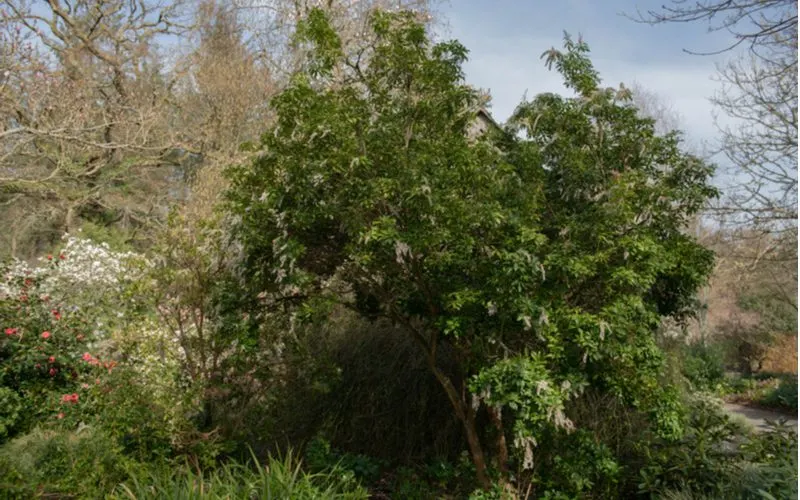
Peter Turner Photography/Shutterstock
- Type: Evergreen
- Native area: The south-east US, from Texas to North Carolina and south to Florida
Andromeda is best known for its smell, which people either love or hate. That distinct scent comes from the hundreds of little pink flowers that bloom on this shrub year-round.
These are great shrubs for shade, as they’ll grow up to 10 feet in height when they mature.
That makes them useful for planting around the edges of a property to create a natural fence. Andromedas require lots of acidic soil.
That means you want plenty of organic fertilizer mixed into your planting bed. They also need to stay hydrated, so water the soil around them regularly.
3. Red Buckeye
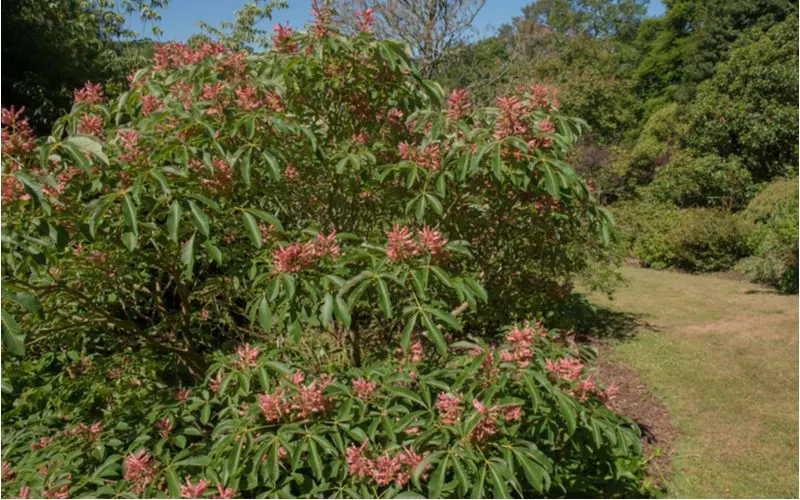
Peter Turner Photography/Shutterstock
- Type: Seasonal
- Native area: The southern US, from South Carolina to Florida, and as far north and west as Illinois
This massive plant is a fantastic shrub for shade. It can grow up to 20 feet high when mature.
Also, hummingbirds love the bright red flowers that bloom on their branches in spring. You’ll need to balance the amount of sunlight your red buckeye receives.
Those shrubs that receive more will grow faster, while the shrubs in the shade will stay shorter. Also, the red buckeye drops its leaves in late summer, so get ready to do some raking.
4. Sumac
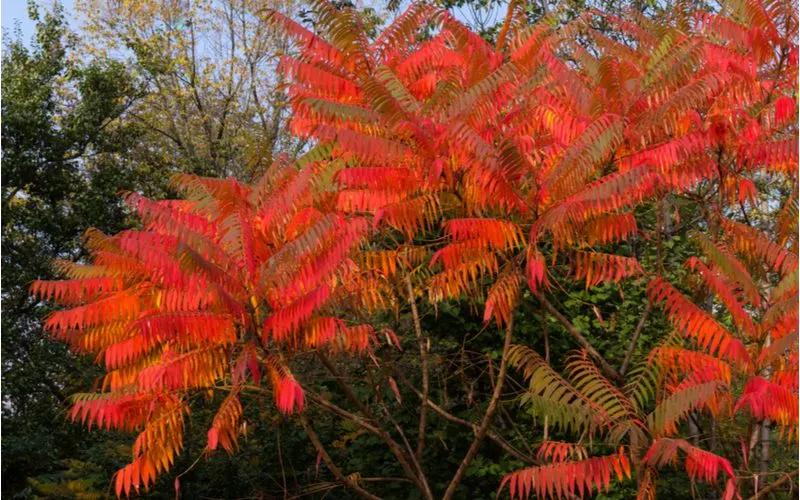
Olga_Shestakova/Shutterstock
- Type: Seasonal
- Native area: north-central USA and Canada, from Montana to Minnesota and up to Alberta
Some people consider the Sumac a small tree, while others consider it a large shrub. For the most part, it is a shrub. It has beautiful gold-green leaves that are soft to the touch.
Sumac grows to around six feet tall, making it ideal for planting along fences or yard boundaries. Its bright leaves let some sun through while providing cool shade at the same time.
This shrub requires partial sunlight, so make sure no big trees are blocking the sun. Also, keep the soil well-drained, as you don’t want to overwater this particular plant.
5. Yew
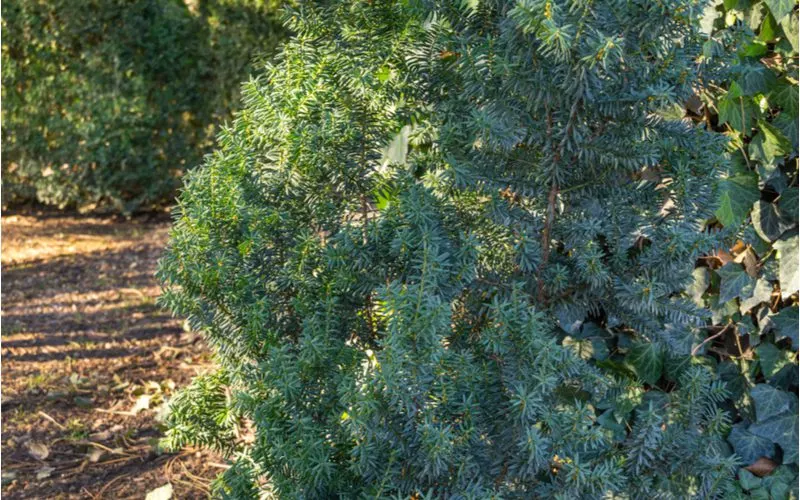
Marinodenisenko/Shutterstock
- Type: Evergreen
- Native area: All of North America
No doubt you’ve seen plenty of yew around. It’s one of the most common shrubs in North America. It can stand up to most weather and doesn’t require too much care, which is why people love it.
Yews have soft, green needles and produce cones and little red berries. Squirrels and birds love them. Left unchecked, a yew can grow up to 20 feet tall.
It’s best to trim them in late spring or early summer before they start to get a little wild. Be aware that yew needles are highly poisonous to dogs, horses, cows, and sheep. The berries, however, are not.
6. Azalea
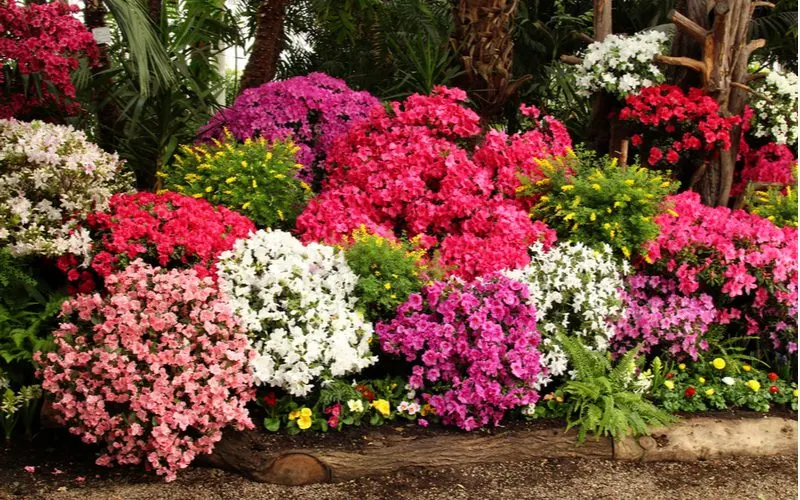
Semper-Scifi/Shutterstock
- Type: Evergreen
- Native area: the southern USA, from California across to Florida, but will also thrive in the north, including Canada.
Azaleas may be the brightest shrub for shade that you can find. They’re a part of the rhododendron family, so they have big, colorful flowers that bloom in the spring and again in the fall.
These flowery plants will grow as tall as you let them, from three feet up to 30 feet or more. Most people trim them around the six-foot mark, which makes them great for fences.
Azaleas require partial shade, so make sure the sun can hit them for a little each day. You’ll also need to keep their soil moist but not muddy.
7. Canadian Hemlock
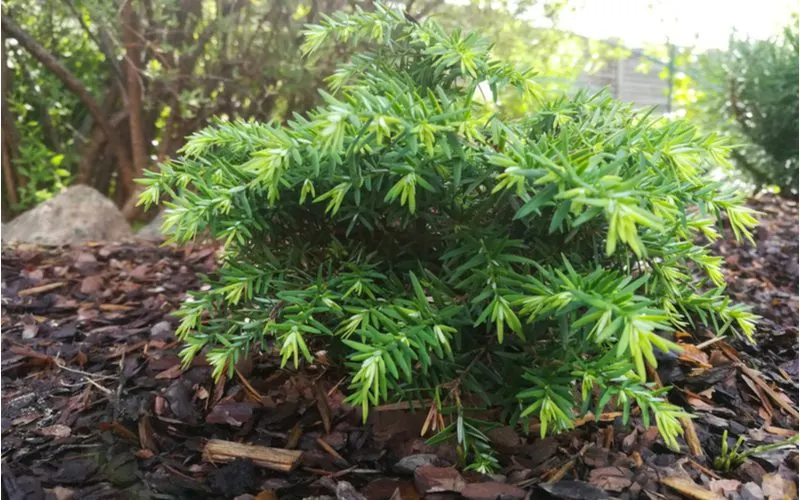
Helen Pitt/Shutterstock
- Type: Evergreen
- Native areas: The north-central USA and Canada
The Canadian hemlock is another popular shrub for shade because it produces a large canopy early in its life. It has bushy, bright-green leaves and long, sturdy branches.
The plant can grow up to 70 feet tall. Most people trim Canadian hemlocks down to 10 or 20 feet. These plants are excellent for hedging.
They’re also extremely hardy and don’t mind extreme changes in weather, from freezing to summer heat. Keep its soil rich with fertilizer and moist.
8. Virginia Sweetspire
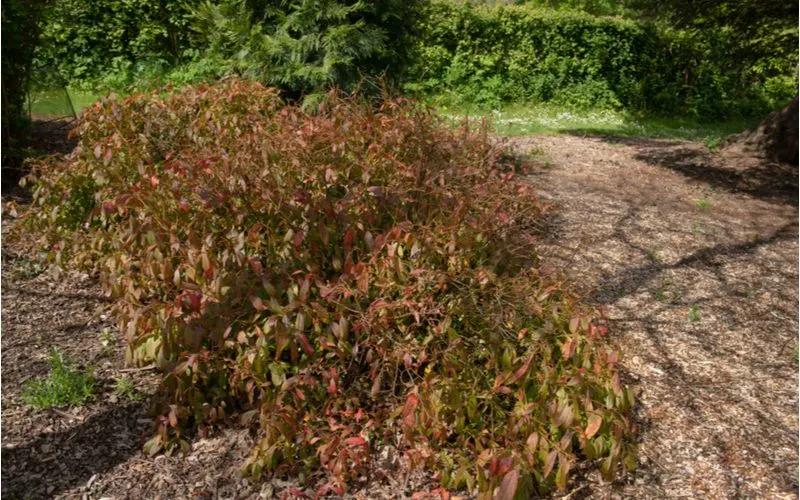
Peter Turner Photography/Shutterstock
- Type: Evergreen
- Native area: The south-east USA, from Maryland to Georgia and west to Oklahoma
The Virginia sweetspire is better known as the Virginia willow. Most people remember the leaves that turn purple in the winter and green in the spring.
It also blooms rows of tiny white or pink flowers on its branches in the spring. Honeybees and hummingbirds love this plant.
The Virginia sweetspire tops out around eight feet, which makes it a fantastic privacy shrub. Even better, this shrub is practically immune to pests, disease, and even deer.
It grows well in most soils, but you want to make sure the soil is well-drained. Like most shrubs, it doesn’t like to be overwatered.
9. Osoberry
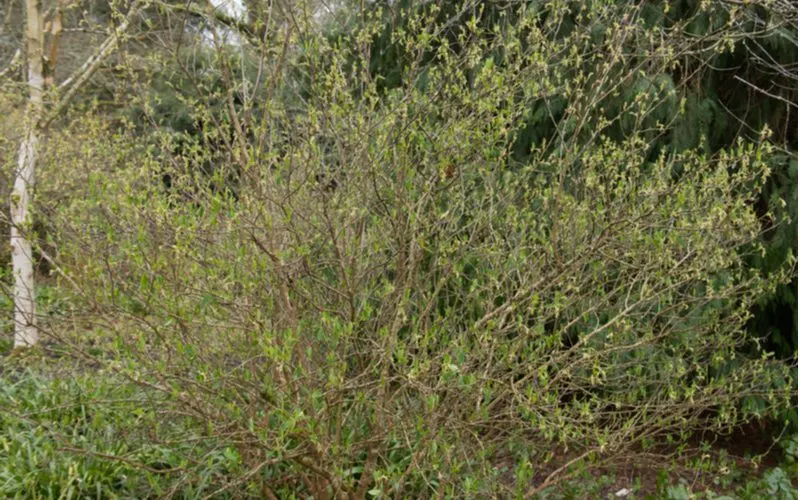
Peter Turner Photography/Shutterstock
- Type: Seasonal
- Native area: Pacific northwest
You may know the osoberry shrub by its more common name, Indian Plum. This branchy shrub sprouts the first berries of the spring and heralds the coming sunny season.
Bees and birds love these berries as a result. The osoberry shrub grows up to 15 feet tall, but you can keep it shorter with regular pruning.
The shrub lets more sunlight through than many other shrubs, thanks to its loose and wide-spread branching.
The leaves aren’t broad, so it’s perfect for “partial sun” scenarios. Remember to keep it well-watered. As a Cascadian plant, it loves moisture.
10. Dogwood
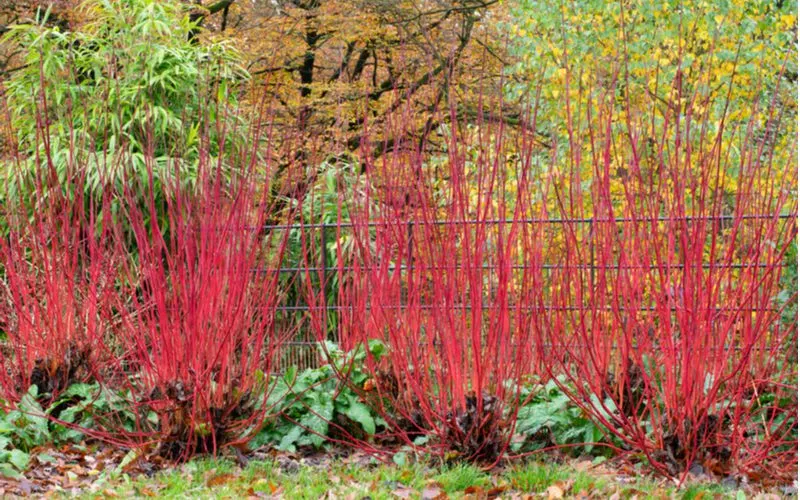
John B. Hewitt/Shutterstock
- Type: Seasonal
- Native area: across North America except in desert areas
Dogwood is a common shrub that you can find almost everywhere. There are more than 60 varieties of dogwood. Some grow berries, while others sprout bushels full of flowers. This plant can grow to 18 feet in height.
Its hardiness makes it ideal for a wide variety of uses, including privacy and providing shade. You need to be cautious with animals and infants around because dogwood is toxic to ingest.
Frequently Asked Questions
If you have questions about choosing the best shrub for shade, you can find some answers here.
Do All Shrubs Require Pruning?
No. Some shrubs do require more care than others, such as yews and hemlocks. Most do not.
Should I Replant Mature Shrubs?
The answer depends. Replanting any mature plant could result in “replanting shock,” which could kill the plant. Unless soil conditions and neighboring plants are the same as the shrub’s old home, it’s best not to replant a mature shrub.
What Are the Best Shrubs for Full Sunlight?
A few shrubs do very well in the burning sun. Lilac, burning bush, and Japanese laurel love being in the sun all day.
What Shrub Grows the Fastest?
The north privet is the fastest-growing shrub in North America. It grows more than three feet each year, making it great for shrub labyrinths but a pain for a homeowner trying to manage it.
What Shrub Gives the Most Shade?
It’s a tie between azalea, yew, and Canadian hemlock for the shadiest shrub. All three grow tall and provide a wide area of shade.
Are Shrubs Poisonous?
Some shrubs are poisonous while others are not. Also, what is poisonous to one animal may not be to another.
Shrubs such as hemlock and yew can be poisonous. For this reason, it’s best to keep your animals and children from eating any shrub.
How Much Do Shrubs Cost?
If landscapers are planting the shrubs for you, expect to pay anywhere between $500 and $5,000. Of course, a lot depends on how many shrubs you need, the type you are buying, and where they’re getting planted.
If you’re planting them yourself, you’ll buy each shrub in a pot at your local greenhouse or garden center. Expect to pay around $20 per pot. You’ll also require the proper soil, fertilizer, and digging tools.
Should I Plant Imported Shrubs?
You should never plant shrubs that are not native to your region. For starters, the soil and weather conditions could kill it.
More critical is the problem that invasive species cause in forests and grasslands. Protect our forests and keep away from imported plants.
So What Are the Best Shrubs for Shade?
The best shrub for shade depends on your needs and where you live.
In any case, these shrubs will bring variety and beauty to your garden or landscaping bed.

